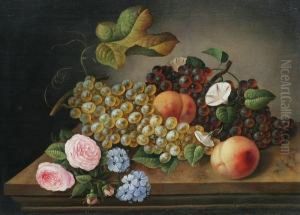Th. Scheuerlein Paintings
Theodor Scheuerlein, born in 1859 and passing in 1911, was a German artist renowned for his contributions to the realm of painting and his distinctive approach to art during the late 19th and early 20th centuries. His work, while not as widely recognized in the broader spectrum of art history as some of his contemporaries, provides an insightful glimpse into the regional artistic movements of his time and showcases a unique blend of traditional and emerging styles.
Scheuerlein's early life was immersed in an environment that cherished the arts, which played a pivotal role in shaping his artistic inclinations. Despite the lack of extensive documentation on his formative years, it is known that he pursued his passion for art with a fervor that led him to study at various prestigious institutions. These formative years were crucial in developing his artistic ethos, characterized by a meticulous attention to detail and a profound appreciation for the natural world.
Throughout his career, Scheuerlein exhibited a predilection for landscapes and still lifes, genres that allowed him to fully explore and express his fascination with nature and its myriad nuances. His landscapes, often depicting the serene beauty of the German countryside, are marked by a vibrant palette and a delicate interplay of light and shadow, inviting viewers into a tranquil world untouched by the industrialization sweeping across Europe at the time. His still lifes, on the other hand, are celebrated for their intricate compositions and the lifelike depiction of their subjects, showcasing his mastery over texture and form.
Scheuerlein's contributions to art were not limited to his paintings. He was an active member of the local art community, participating in exhibitions and engaging in dialogues that sought to bridge traditional art forms with the emerging modernist movements. Despite the acclaim he received during his lifetime, his work fell into relative obscurity following his death in 1911. Recent years, however, have seen a resurgence of interest in Scheuerlein's oeuvre, with art historians and collectors alike revisiting his legacy and recognizing the subtle yet profound impact he had on the art world of his time.
In sum, Theodor Scheuerlein's artistry is a testament to the enduring beauty of the natural world and the capacity of art to capture and convey this beauty in ways that resonate across time. His legacy, though understated, continues to inspire those who seek to find harmony and tranquility through the lens of art.
